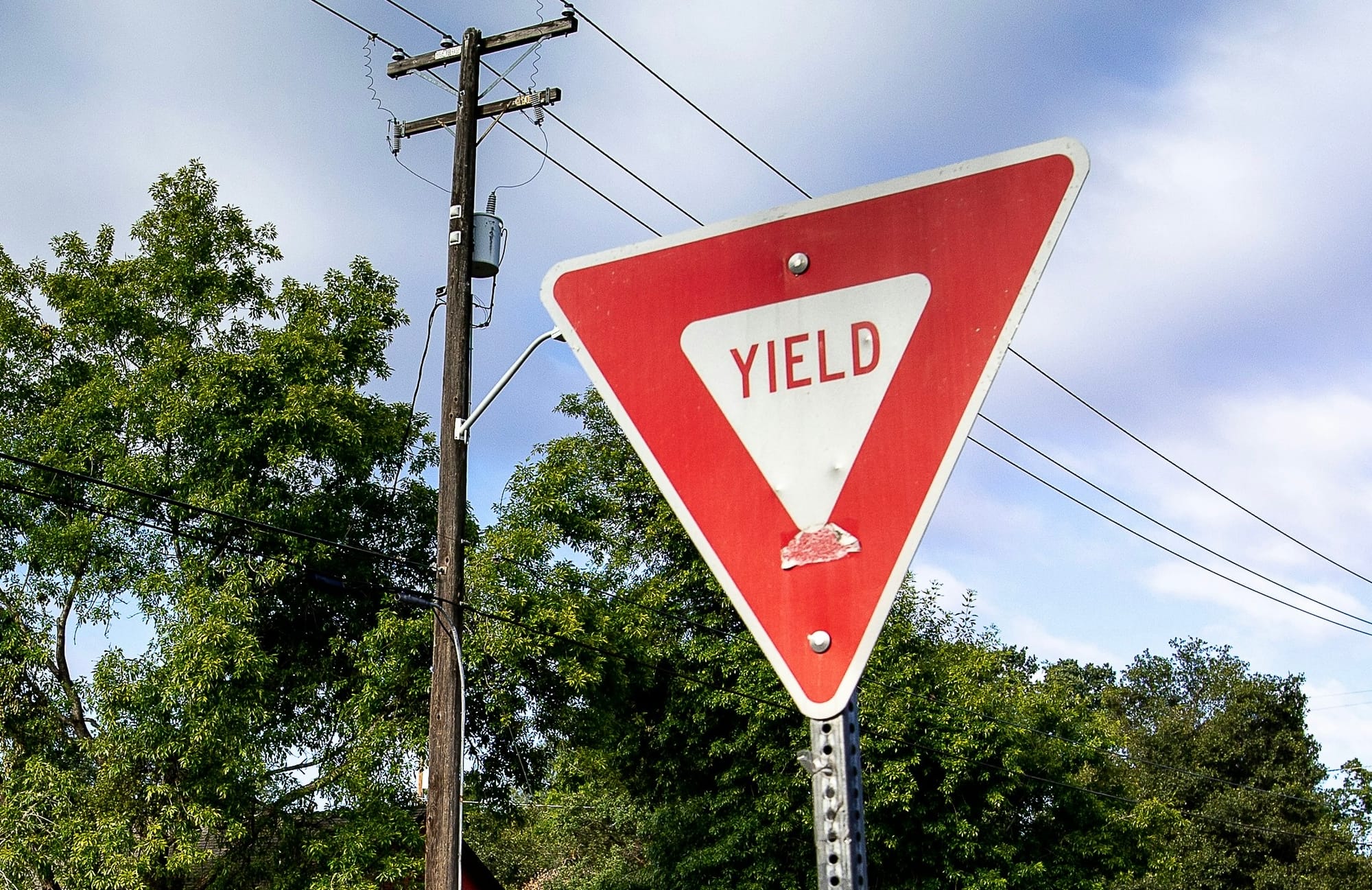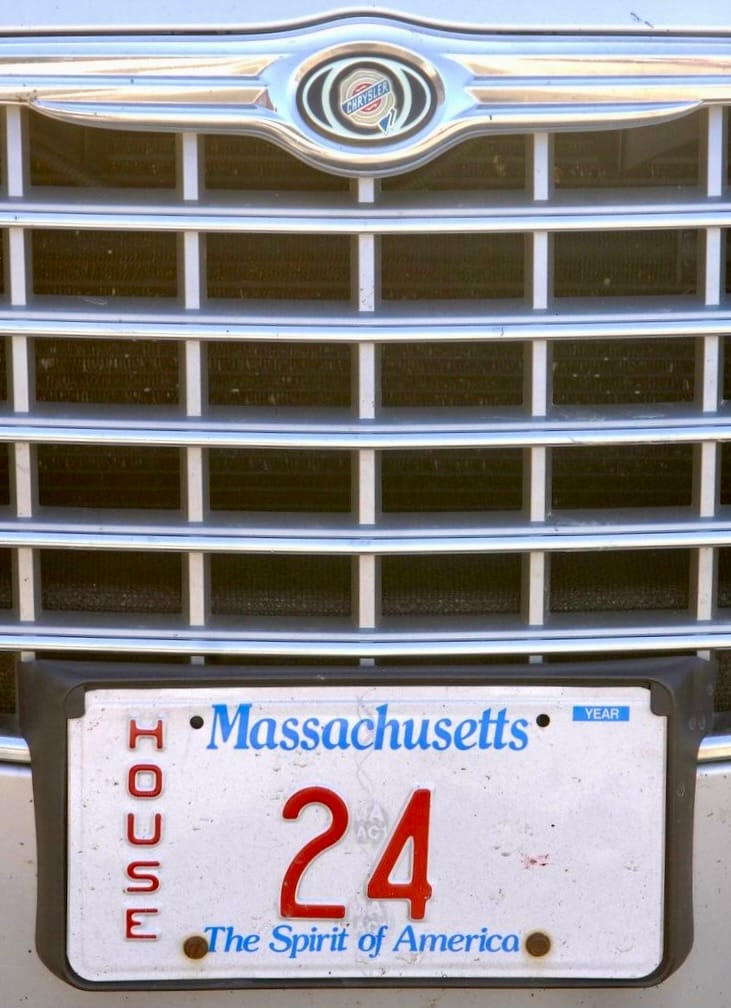Rolling on Through
After dodging intrusive questions from your mother in-law by stuffing your face with some of Idaho’s finest, I’m here to serve up a second helping of good stuff from the Potato State.

Aside from Potatoes and strange color football fields, Idaho has long been home to something else unique and excellent. The Idaho Stop. Everyone knows that stopping needlessly sucks. It also sucks more for some than others...Shifting a semi truck's 18-speed manual from a stop is not pleasant. Or so I hear. But as lazy as it may sound, stoping for cyclists is strenuous. A paper written by UC Berkley physicist, Joel Fajans, states that a 150 pound cyclist needs to generate 5 times the power to accelerate from a full stop than to cruise at 12.5mph. In car terms, if your engine uses 80 horsepower to maintain cruising speed, it would need to generate 400 horsepower to accelerate from a stop back to cruising speed. Needless to say, the spike in effort to just obey stop sign laws is a big hurdle for all but fairly serious cyclists. If cars needed this power spike to accelerate from a stop sign, laws would have been changed long ago. Instead cyclists of all types, all over the world, have been living with this reality every day. Except in of all places, the glorious state of Idaho.

You see in the early 1980’s, Idaho was unique in that minor traffic infractions were treated as criminal offenses. As a result, the courts were getting overloaded with criminal cases and something needed to be done. In order to clean up traffic codes and decriminalize infractions that weren’t actually “criminal”, House Bill 541 was introduced. Its unique trait was that it included provisions for cyclists to treat a stop sign as if it were a yield sign, so long as there was no impeding traffic. Despite some objections, the bill passed and the “Stop as Yield” law was born. In reality, the bill only legalized the actual behavior of cyclists on quieter roads. You know, the place where cyclists belong. The sad truth is these “quiet” roads are often ones used by cars as short cuts and can be littered with stop signs as a result. Stop signs designed for automotive traffic…not bicycle traffic. Hopefully you see where this is going…


For the non-cyclists reading this, please read on before you begin fuming in the comments section. Allowing cyclists to treat a stop sign as a yield sign (while moving at a “reasonable speed”) and a red light as a stop sign (only when it is safe to do so) is giving special privileges to cyclist. It’s a valid criticism and it can cause some confusion to the uneducated. Let me assure you, special rules of the road for everyone abound if you read your state's driver's manual. So please, read on!
Because HB541 remedied a problem unique to Idaho, Idaho remained the lone bastion of the “Stop as Yield, Red Light as Stop” law for decades. Eventually though, critics and proponents began to dig into a few decades worth of data. Believe it or not, what they found has made ten other states plus Washington D.C. enact similar “Idaho Stop” laws. Depending on what studies you like, your opinion of the Idaho Stop may vary. But I am yet to find a study that proves it to be less safe. Most studies show that states with an Idaho Stop law are safer for cyclists and pedestrians. While a handful of others are inconclusive at worst.
The Idaho Stop doesn’t just benefit cyclists; it’s been proven to benefit drivers as well! How? A cyclist coming to a complete stop, putting a foot down on the road, then getting back on their way takes double the amount of time as a cyclist simply yielding to traffic. Traffic following behind the rider, or cross traffic without the right of way, has to wait much less time if a cyclist can expedite their operation. Everything just flows smoother!
I’m a seasoned cyclist and before I learned what an Idaho Stop was, I found myself doing it because it just felt natural. I’m willing to bet most of the anecdotal stories we hear from drivers about cyclists “blowing stop signs/lights” are actually cyclists performing an Idaho Stop. Not the entitled, elitist snobs they lead us to believe. For me, spending a few less seconds crossing a quiet intersection feels safer and more efficient. Despite the law in Massachusetts currently prohibiting it.

Since 2017, ten other states as well as Washington D.C. have adopted Idaho Stop laws of some sort, allowing cyclists to treat a stop sign as a yield sign. Idaho, Arkansas, Oklahoma, Colorado, and Alaska take things further and allow cyclists to treat a red light as a stop sign if traffic conditions permit. This is especially handy where traffic sensors are unable to sense a lone cyclist trying to pass through an intersection.
In a world where traffic flow seems to get worse year after year, a world where apps like Waze make less traveled roads busier and busier, the Idaho Stop makes more and more sense. In order to see the decrease traffic we all desperately want, the number of cars on the road needs to drop significantly. Cities and towns need to take the concerns of cyclists seriously because most of our infrastructure only tolerates cycling. Cycling must be actively promoted! In order to get an Idaho Stop law enacted in Massachusetts, I would be willing to compromise. I'd be willing to have an Idaho Stop law increase penalties on reckless cyclists just to appease the drivers out there. Would you?
The sad truth is that even if mountains of data could prove that the Idaho Stop increases traffic flow and safety for everyone on the road, lawmakers in Massachusetts rarely ride bikes. Heck, they rarely experience the road in the same way an average driver does! Why? Many lawmakers receive legislative license plates which come with perks like toll exemption, access to restricted/controlled roads, parking privileges, and probably a few other unadvertised “advantages”. Without experiencing what we commoners do on the road, how can we expect them to have meaningful insight into what actually happens on our roads?



Just a few of the special license plate options available to government officials. Photo Credit WCVB-TV & Chris Woodcock
So when your favorite government official complains that making your roads friendlier for cyclists is "too expensive", remind them that Idaho Stop laws cost virtually nothing. Who doesn't love a cheap and effective first step?


Comments ()